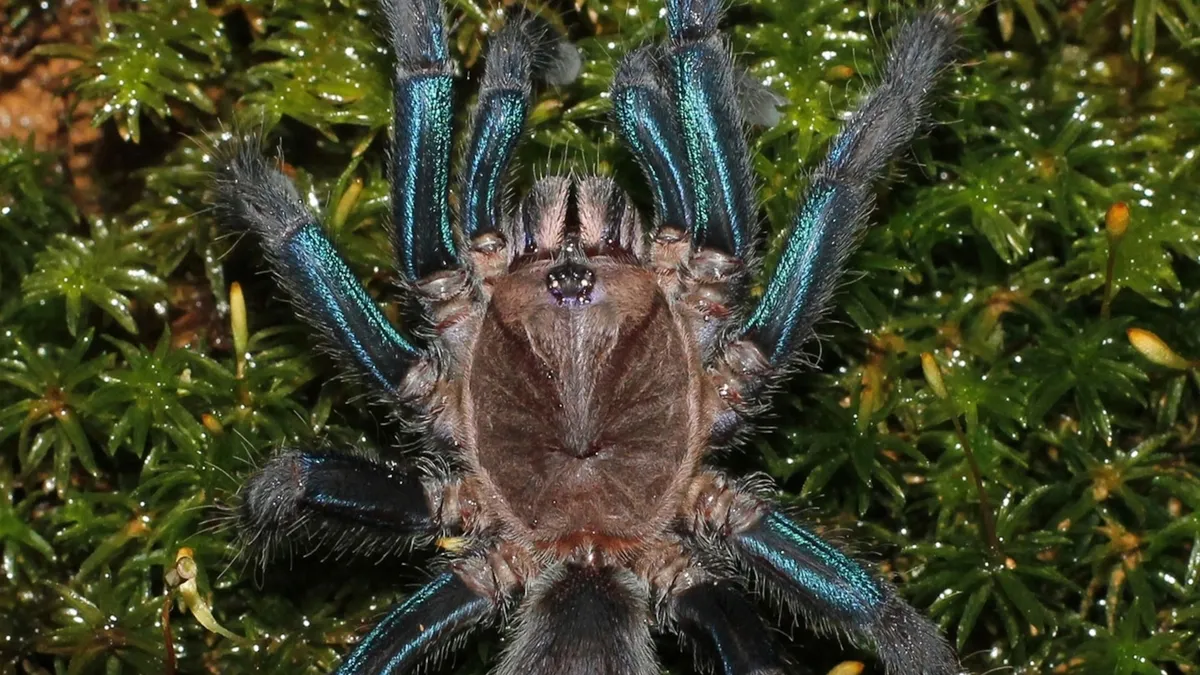The world of arachnids is teeming with fascinating creatures, and one that captivates enthusiasts with its mesmerizing appearance is the cobalt blue tarantula. In this article, we will embark on a journey to unravel the mysteries surrounding this arachnid, exploring its habitat, physical characteristics, behavior, and much more.
Introduction
The cobalt blue tarantula, scientifically known as Haplopelma lividum, hails from the dense, tropical rainforests of Southeast Asia. Its striking blue coloration has made it a sought-after species among arachnid enthusiasts, elevating its status from a mere creature to a captivating companion for those who dare to venture into the world of exotic pets.
Natural Habitat
These mesmerizing creatures thrive in the dense vegetation of Southeast Asia, particularly in countries like Thailand and Myanmar. The lush rainforests, with their high humidity and specific temperature ranges, create an ideal environment for the cobalt blue tarantula to flourish. Striking a delicate balance between moisture and warmth is crucial for their survival.
Physical Characteristics
The cobalt blue tarantula is a visual spectacle, boasting a vibrant blue hue that sets it apart from its arachnid counterparts. The intensity of the blue coloration can vary, with some individuals displaying a more vivid shade than others. Their leg span, typically ranging from 5 to 6 inches, adds to their majestic presence.
Behavioral Patterns
Despite their intimidating appearance, cobalt blue tarantulas are generally docile creatures. They are nocturnal hunters, relying on their keen sense of touch and vibration to detect prey. While solitary by nature, occasional interactions with fellow tarantulas occur, shedding light on their social dynamics.
Life Cycle
The life cycle of a cobalt blue tarantula consists of several molting stages. Molting is a process wherein the tarantula sheds its exoskeleton to accommodate its growing body. This intricate process is vital for their growth and development, and understanding it is key for those who choose to keep them as pets.
Diet and Feeding Habits
In the wild, cobalt blue tarantulas primarily feed on insects. Their diet includes crickets, beetles, and other small invertebrates. For those considering them as pets, replicating this natural diet is essential for their well-being. A balanced and nutritious diet contributes to their overall health and longevity.
Captivity as Pets
The allure of owning a cobalt blue tarantula as a pet is undeniable, but it comes with responsibilities. While they are relatively low-maintenance, providing a suitable environment with proper temperature and humidity levels is crucial. Their enclosures should mimic their natural habitat to ensure their well-being.
Common Misconceptions
Misconceptions about cobalt blue tarantulas abound, ranging from their temperament to their venomous nature. Contrary to popular belief, these tarantulas are not aggressive and will only bite if they feel threatened. Dispelling these myths is vital for fostering responsible ownership and appreciation.
Conservation Status
As with many species in the wild, cobalt blue tarantulas face threats to their survival. Habitat loss due to deforestation and the illegal pet trade contribute to their declining populations. Conservation efforts are underway to protect their natural habitats and regulate their trade, emphasizing the need for sustainable practices.
Significance in Folklore
Throughout history, cobalt blue tarantulas have held cultural significance in various communities. Some cultures view them as symbols of wisdom or protection, while others associate them with myths and legends. Understanding these cultural connections adds a layer of appreciation for the arachnid beyond its biological traits.
Tips for Tarantula Enthusiasts
For individuals fascinated by cobalt blue tarantulas, here are some practical tips. Research extensively before acquiring one, ensure a suitable habitat, and be mindful of their specific needs. Joining online communities or local clubs can provide valuable insights and a supportive network for tarantula enthusiasts.
Medical Significance
While the venom of cobalt blue tarantulas is not lethal to humans, it can cause discomfort. Some studies suggest potential medical applications for their venom, such as pain relief. However, caution is necessary, and further research is needed to unlock the full range of possibilities associated with their venom.
Challenges in Conservation
Conserving cobalt blue tarantulas faces challenges, including habitat destruction and the difficulty of regulating the pet trade. Collaborative efforts involving governments, conservation organizations, and the public are essential to ensure the survival of this enchanting species in the wild.
Breeding and Reproduction
Understanding the breeding and reproduction habits of cobalt blue tarantulas is crucial for maintaining healthy captive populations. Captive breeding programs play a pivotal role in reducing the pressure on wild populations and contribute to the overall conservation of the species.
Future Prospects
The future of cobalt blue tarantulas hinges on ongoing research, conservation initiatives, and responsible pet ownership. As we delve deeper into their world, discoveries may uncover new facets of their biology, behavior, and ecological importance, shaping the path for their future.
Conclusion
In conclusion, the cobalt blue tarantula is a creature of wonder, boasting not only a visually stunning appearance but also a complex life that intertwines with the ecosystems it inhabits. Whether admired from a distance in the wild or kept as captivating companions, these arachnids deserve our respect and understanding.









